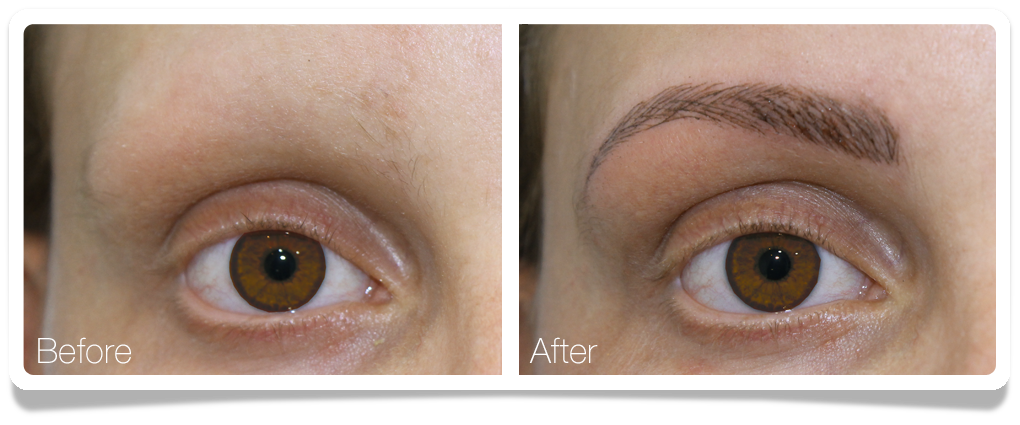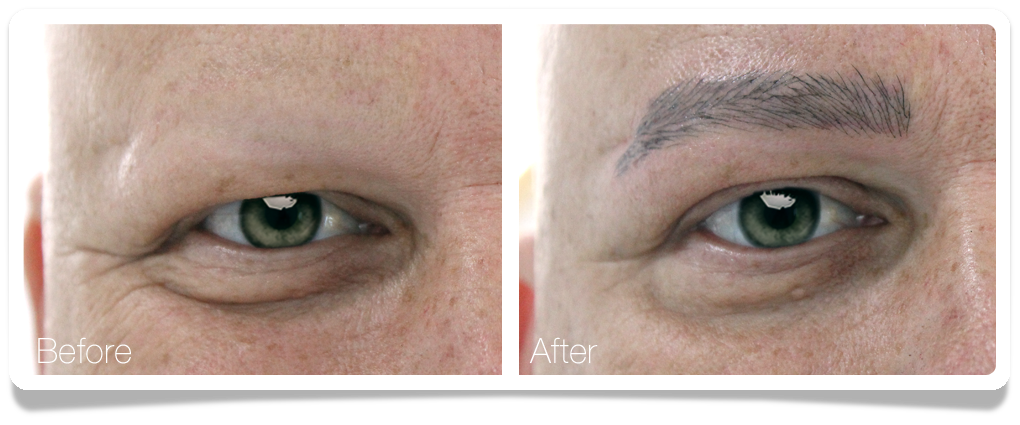
It’s all the same!
The most commonly used term has been permanent makeup, but in reality it’s not actually makeup, nor is it permanent (thankfully!). Later, micropigmentation was established which no longer upsets us as much, but the most correct term which we should use is Medical Dermopigmentation, because it should be performed by medical personnel, and because in fact what we are doing is inserting pigments into the skin which will be reabsorbed over time.
This procedure is based on using colours to solve both medical problems (vitiligo, scars, skin defects or mucosa and alopecia problems...) as well as aesthetic issues (beautification of eyebrows, eyes, lips). In itself, the technique involves inserting pigment granules into the dermis by a multipuncture method or a skin tear with very fine needles.
Indications
- • Alopecia of the eyebrows or eyelashes
- • Correction of scars and burns
- • Hair densification and shading
- • Lip profiling and colouring
- • Oncological plastic reconstructions (Mammary areola)
Procedure
Pre-designing is essential to what we want to do, so during the first visit, a design and visagism (characteristics of the region to be treated) will always be carried out. Furthermore, an allergy test is performed even though the pigments we use at Clínica Áureo are inorganic, minimising the possibility of an allergic reaction. The material used is disposable and single-use, complying with the strict sanitary and hygiene regulations.
Techniques
Dot to dot pigmentation. Using needles, the pigment is placed in the previously designed sketch, by dots placed one next to the other.
Striped technique. Using needles, the pigment is deposited through small stripes which are superimposed in front, until forming the designed sketch.
Tear technique (Dermoblading). Bevelled needles are used to insert the pigment into the skin, tearing it slightly, but being shallower in skin penetration than the other techniques.
Tattoo. In the case of treatment of chronic pathologies such as vitiligo, alopecia or the absence of the mammary areola, a definitive pigmentation technique such as a tattoo can be considered.
Depending on the technique or the area to be treated, different types of anaesthesia are used: topical or local.
Most common areas
Dermopigmentation of the lips. Firstly, the lip profile is pigmented and then, optionally, the lines of the sketch are then blurred towards the vermilion border of the lip.
Pigmentation of the eyelids. The upper eyelid can be pigmented just above the eyelash line, achieving an eyeliner effect, or even between the eyelashes to achieve a more natural effect. For the lower eyelid line, pigment is placed between the eyelids.
Dermopigmentation of the eyebrows. Depending on the patient's needs, we will proceed with the shading or compact technique in which the gaps of the eyebrow are filled in, or even the hair by hair technique in which eyebrow hairs are simulated.
Other areas. Virtually any anatomical area of the human body is capable of undergoing dermopigmentation, and in each case the benefits or complications that may arise need to be assessed.


Acting after treatment
Photoprotection is absolutely necessary for maintaining the chosen tone, as well as careful hygiene of the treated area; and we advise applying something cold to the area. According to medical criteria, guidelines for antibiotics and anti-inflammatories can be provided.
Once the micropigmentation is carried out, the expected process consists of an increase in the chosen tone during the first week for the scab to be formed, in the second week a decrease in tone will be visible, due to desquamation, and finally, in the third week the colour will stabilise. It’s due to this that in Clinical Áureo we do not perform touch-ups until at least 30 days after the procedure.
The pigments are reabsorbed over time, with an estimated duration that can vary between 1 and 3 years.
Dr Cristina Núñez
Aesthetic Medicine
Clínica Áureo 19th July 2016
More cases of dermopigmentation.











